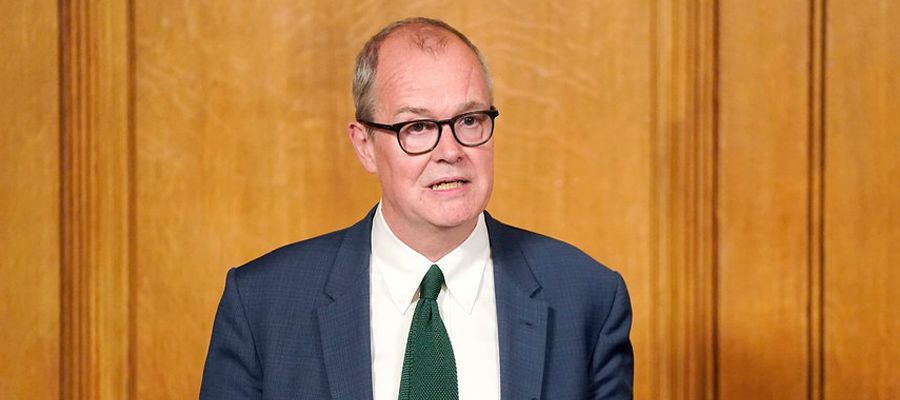We should expect government scientific data to be accurate so that we can have confidence in public policy.
- Monday, November 9, 2020
 The official SAGE projections used to justify England being placed into a month-long national lockdown have been ‘updated’. The graphs presented by Sir Patrick Vallance, the governments chief scientific adviser had indicated that England could see 1500 deaths and 9000 hospital admissions per day by 8th December, far higher than we experienced during the first wave. These figures have since been amended after errors were found. How can something so critical to government policy have errors? The new figures reduce the upper limit of deaths to 1000 per day, which is in line with the peak of last April.
The official SAGE projections used to justify England being placed into a month-long national lockdown have been ‘updated’. The graphs presented by Sir Patrick Vallance, the governments chief scientific adviser had indicated that England could see 1500 deaths and 9000 hospital admissions per day by 8th December, far higher than we experienced during the first wave. These figures have since been amended after errors were found. How can something so critical to government policy have errors? The new figures reduce the upper limit of deaths to 1000 per day, which is in line with the peak of last April.
These updates come after separately commissioned modelling that showed a worst-case scenario of 4000 deaths per day by the end of December to be based on outdated data. This model showed death rates of over 1000 on 1st November when the actual figure that day was 200.
Since the announcement of a national lockdown in England, research conducted by Kings College London has found that the R number across the UK was 1 as infection cases fell in both the North of England and Scotland.
This data coincides with figures from the Office of National Statistics (ONS), which has been continuously running large rolling studies. The ONS survey suggests that infection rates have stabilised. The governments SAGE group whose advice prompted the return to lockdown said that ‘the rate of infection growth in parts of the country was slowing’. On the back of their data, Kings College have suggested that we have passed the peak of the second wave.
Separately Oxford University suggested that should we be at or past the peak of infection, then we should not expect the death rate to exceed 1000 per day for any prolonged period but could face a daily death toll of 500 per day for a period in November before falling back again.
Let us hope that the new national lockdown in England succeeds in driving down the national R rate well below 1, so that the transmissions are significantly reduced resulting in less infection, lower hospital admissions and reduced death rates. If so, we could look forward to a nearer to normal Christmas. Something that families and businesses very much want.
On the back of the decision to place the country into a second lockdown, the Bank of England has extended its QE programme by £100bn in order to cover the cost of lockdown and the extension of the furlough scheme to the end of December. Chancellor Rishi Sunak has since announced that furlough will now be extended across all nations of the UK until the end of March. This will mean that some workers could spend 12 months at home rather than working. This may be a great relief to many households, but it also added a further £50bn to the nation’s debt with the BoE increasing its QE government bond purchases to £150bn.
With such large costs being placed upon generations of tax payers, it should be expected that government scientific data is consistent and accurate so that the public can have confidence in public policy.
The governments quantitative easing (QE) programme started in 2008 after the financial crisis and has grown in size recently due to the cost of the Covid crisis. Once the BoE has purchased the most recent QE allocation, it will own nearly half of all UK public debt totalling £1.8tn of which £895bn is due to QE bond purchases. Our total national debt is now over £2tn.
At times of economic downturn, demand is naturally depressed with the private sector not investing or borrowing to spend. During these periods, such as now, the government steps in to borrow in order to support the economy and create demand. In the short term this will encourage activity and bring some subdued inflation back into the economy. While interest rates are a historical low of 0.1%, government can borrow money at lower cost than the rate of inflation at 0.7%, but this is not a cost-free option. Inflation is bound to return with such loose money around. This will hurt the gilt and fixed interest market as future inflation devalues fixed returns. For this reason, we will consider adding index linked global bonds to our 35th Edition portfolios next summer.
Despite the extension of the furlough scheme, the BoE are forecasting that UK unemployment will peak at 7.75% in Q2 2021 when the furlough scheme ends and stay at that level for a period of time. This month UK unemployment rate was at a four year high of 4.8% with 1.6 million fellow citizens without a job.
The UK is expected to record a 15.5% recovery in economic activity in Q3 due to the economy re-opening. This bounce back will now be curtailed due to the Q4 lockdown.

Chris Davies
Chartered Financial AdviserChris is a Chartered Independent Financial Adviser and leads the investment team.
About Estate Capital
Financial Services
Our Contacts
7 Uplands Crescent,
Swansea, South Wales,
SA2 0PA.
Tel: 01792 477763
